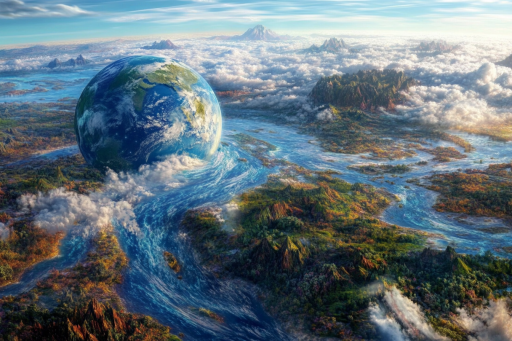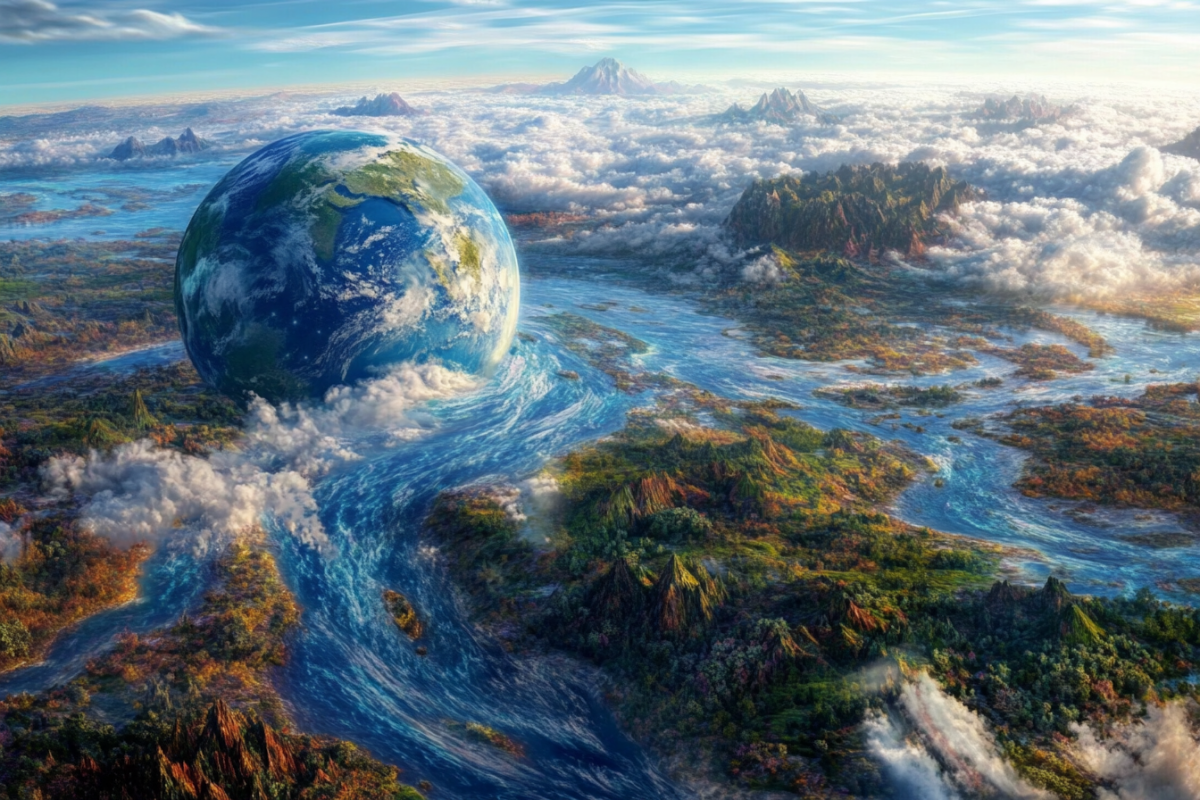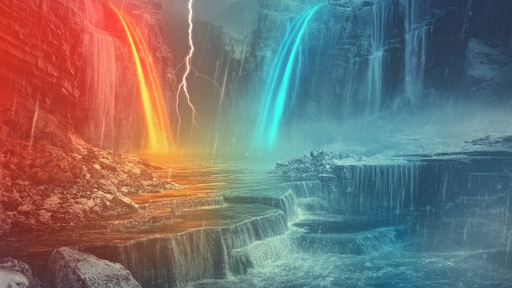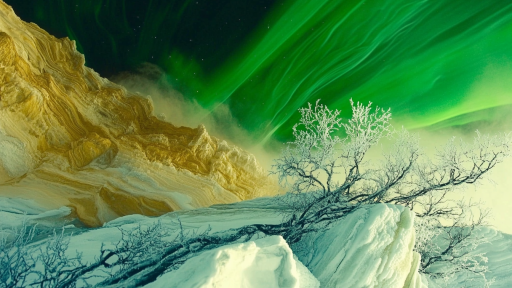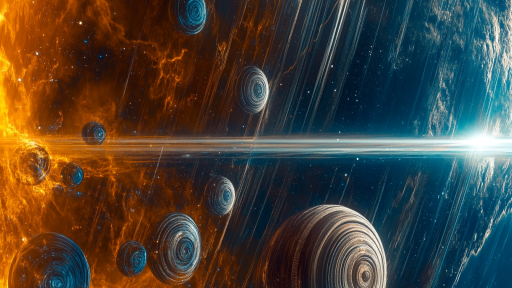
The search for life beyond Earth has led scientists to some of the most fascinating and mysterious exoplanets and moons in the cosmos. These worlds, with their alien atmospheres, strange oceans, and bizarre weather patterns, challenge our understanding of what it means to be habitable. Some hide vast underground oceans, while others have atmospheres rich in the building blocks of life. If extraterrestrial life exists, it may already be waiting for discovery on one of these distant, enigmatic worlds.
Europa – The Ocean Beneath the Ice

Jupiter’s moon Europa is one of the most promising candidates for alien life. Beneath its thick shell of ice lies a vast, salty ocean, possibly containing hydrothermal vents similar to those that support life in Earth’s deep seas. Recent discoveries suggest this ocean may be rich in oxygen, increasing the possibility of microbial or even complex life. Future missions aim to pierce the ice and uncover the mysteries lurking below.
Enceladus – Geysers from the Deep

Saturn’s icy moon Enceladus regularly spews towering plumes of water vapor into space, providing direct access to the underground ocean hidden beneath its frozen surface. Scientists have detected organic molecules, salts, and even hints of hydrogen in these plumes—ingredients essential for life. Could microscopic organisms be thriving in the warm, dark waters beneath its ice? The answer may be hiding in the icy spray.
Proxima b – The Earth Next Door?

Orbiting the nearest star to the Sun, Proxima Centauri b sits in its star’s habitable zone, where liquid water could exist. Although its parent star is a violent red dwarf, which bombards the planet with radiation, some models suggest an atmosphere or ocean could protect potential life. If Proxima b harbors organisms, they may have evolved unique adaptations to survive in an environment vastly different from Earth’s.
Titan – A World of Liquid Methane

Saturn’s largest moon, Titan, is a world unlike any other. With its thick atmosphere and lakes of liquid methane and ethane, it resembles a frozen version of early Earth. Scientists speculate that alien life forms, different from anything we know, could exist in these hydrocarbon seas. NASA’s upcoming Dragonfly mission will explore its surface, searching for the building blocks of life in Titan’s strange chemistry.
Trappist-1e – A Rocky Earth-Like World

Trappist-1e is one of seven planets orbiting the ultra-cool dwarf star Trappist-1, and it sits in the habitable zone. Scientists believe this exoplanet could have liquid water, a stable atmosphere, and the right conditions for life. Its slow rotation might create extreme climates, but that doesn’t rule out the possibility of alien organisms. If we ever make contact with extraterrestrial life, it may come from a world like this.
Kepler-442b – A Super-Earth with Potential

Kepler-442b orbits a stable, sun-like star and is considered one of the most Earth-like exoplanets ever discovered. Slightly larger than our planet, it may have a thick atmosphere and liquid water, making it a prime candidate for life. If vegetation-like organisms exist there, they might even use a different form of photosynthesis due to its dimmer star. Could this be a second Earth waiting to be explored?
LHS 1140 b – A Super-Earth in the Habitable Zone

LHS 1140 b is a massive, rocky exoplanet orbiting in the habitable zone of its red dwarf star. Its thick atmosphere could help retain heat, allowing for liquid water to exist on its surface. With more gravity than Earth, life here might be sturdier and more resilient than what we know. Future telescopes will probe its atmosphere, searching for chemical signatures of life.
Gliese 667 Cc – A Potentially Habitable Super-Earth

Gliese 667 Cc is a fascinating exoplanet that receives similar amounts of energy from its star as Earth does from the Sun. If it has an atmosphere, it could support liquid water, making it one of the most promising places for extraterrestrial life. The challenge? It orbits a red dwarf star, meaning life here would need to withstand intense stellar flares. If anything survives on its surface, it may be far different from life on Earth.
K2-18b – A Water World in the Making

Recent studies suggest K2-18b may have a hydrogen-rich atmosphere with the presence of water vapor—an intriguing sign for habitability. Although it is much larger than Earth, its conditions could allow for liquid water clouds, a key ingredient for life. If alien organisms exist here, they may be floating in its thick atmosphere rather than living on solid ground. This world challenges our understanding of where life can thrive.
Ross 128 b – A Quiet Earth-Like Candidate

Unlike many exoplanets around red dwarf stars, Ross 128 b orbits a relatively calm and stable host. This means it is less likely to be blasted by harmful radiation, increasing its chances of maintaining an atmosphere. If life exists here, it could have developed in conditions not too different from our own. This planet may be one of our best bets for finding extraterrestrial life within reach of future interstellar probes.
Ganymede – The Largest Moon with a Hidden Ocean

Jupiter’s moon Ganymede is the largest in the solar system, and recent studies suggest it may contain more water than all of Earth’s oceans combined—hidden beneath an icy crust. Its magnetic field suggests a liquid, salty ocean beneath the surface, possibly warmed by internal forces. If deep-sea life can thrive around hydrothermal vents on Earth, why not on Ganymede? Future missions may provide the answer.
Are We Alone, or Are We Late?

The discovery of these alien worlds has transformed the search for life beyond Earth, revealing that habitable planets and moons may be more common than once thought. But if life exists elsewhere, why haven’t we found undeniable proof? Are we the first intelligent species to explore the universe, or are we simply one among many—arriving late to a cosmic party that’s already in progress? The answers may be out there, waiting for us to find them.

